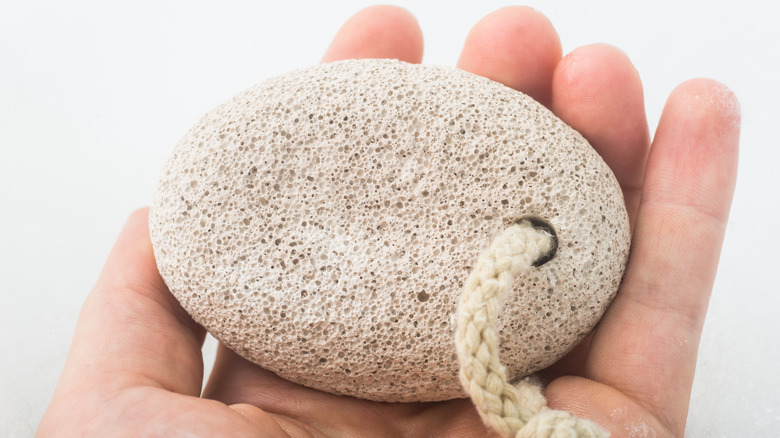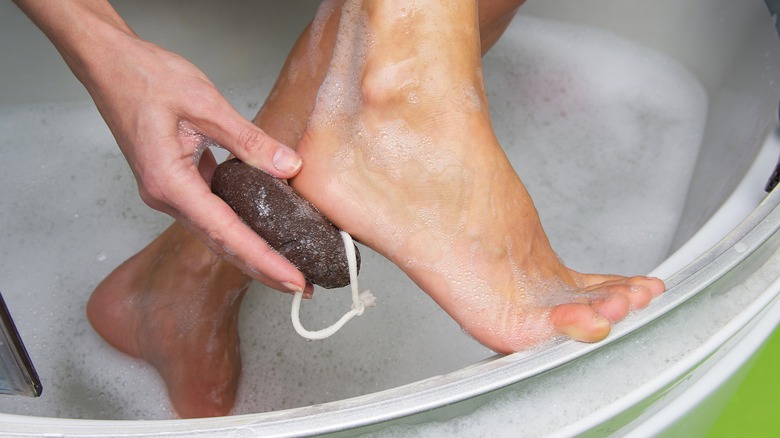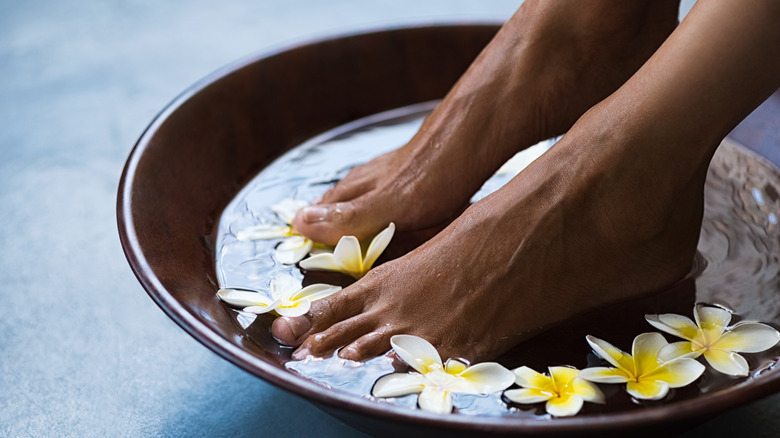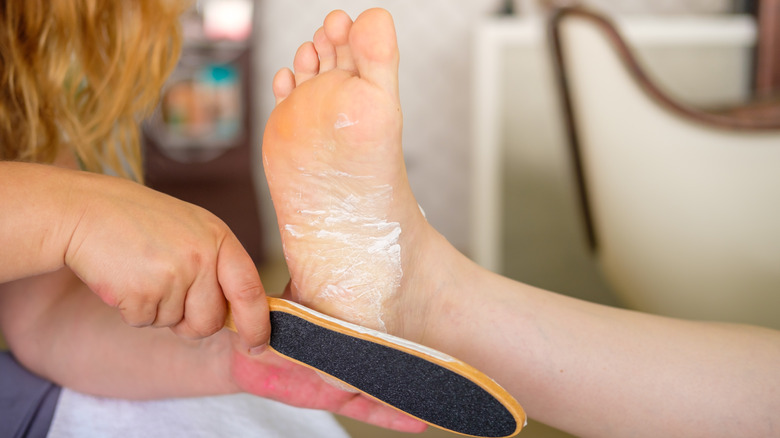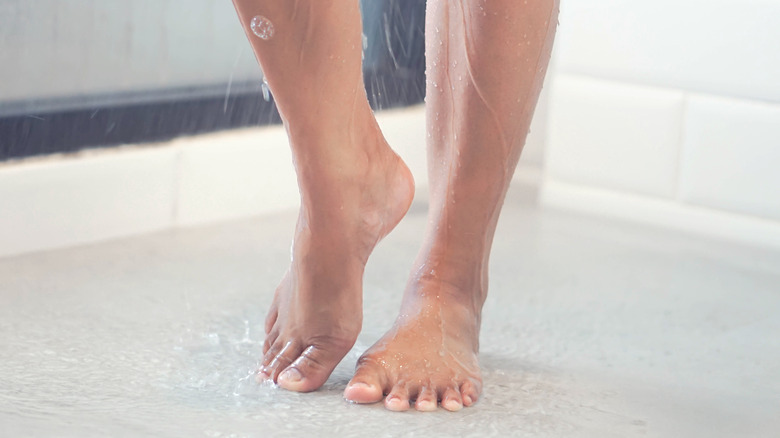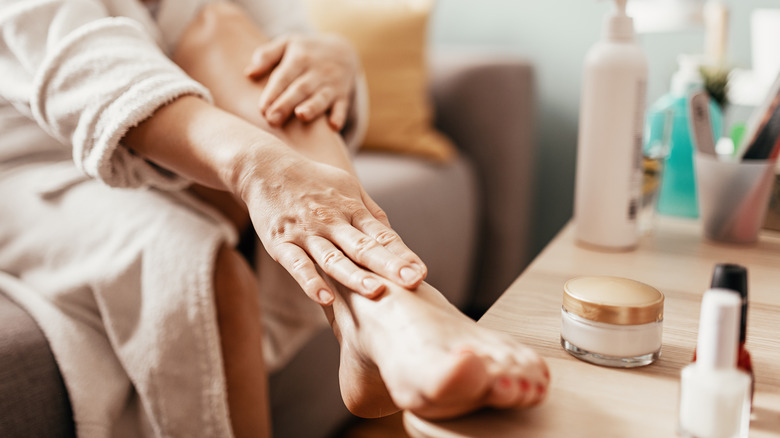Here's Exactly How To Use A Pumice Stone For Baby Soft Feet
Life requires us to be on our feet a lot, whether it's at work, taking care of the family, or maintaining an active lifestyle. Over time, our feet can become callused, rough, and dry when we forget to give them some extra care. If you've been experiencing pain and discomfort with your feet, exfoliating with a pumice stone can help to smoothen out those concerns.
Pumice is a type of volcanic rock formed when lava cools. It's super lightweight and porous, almost resembling a sponge. Pumice stone is used as an exfoliating skincare tool, particularly on areas where the skin is tough, as it can be painful when used on other, softer areas. It's meant to be abrasive in order to peel off built-up dead skin. Your nail tech has probably used one on your heels during a pedicure (and it's often the most ticklish part). But you can easily acquire your own pumice stone to use regularly at home, and it's a great addition to any at-home spa night. Plus, who doesn't love silky-smooth skin?
How often to use pumice stone on your feet
Using a pumice stone isn't something you need to do every day, and the frequency often depends on how sensitive your skin is. You can exfoliate your feet once a week if you want to keep up a routine, but if your skin is on the sensitive side, every other week or simply once in a while will suffice.
Additionally, if you notice that a pumice stone only irritates your skin, you may want to try out a chemical exfoliant instead. Among the mistakes you don't want to make when exfoliating, this includes scrubbing too hard and too often. Remember to use gentle pressure. You don't want to take off too much skin or cause any bleeding.
Though it's generally safe to use a pumice stone on your feet, it may be risky for people with neuropathy, or numbness, caused by diabetes and other health conditions. Dermatologist Dustin Portela, MD explained to Byrdie, "You may not feel pain if you begin to over-exfoliate, increasing your risk of infection."
Soak your feet and pumice stone
Before you can start exfoliating, you want to prepare and soften the skin. You can do this by pre-soaking your feet in warm water for 5 to 10 minutes without letting the skin become too wrinkled. The skin on your feet is tough, and soaking will allow it to soften up before exfoliating.
You'll also want to get the pumice stone wet before using it. A dry pumice stone is both uncomfortable and not as effective as when the skin is wet.
Exfoliate by using circular motions
Once you've prepped your feet and your stone, you're ready to start taking off that dead skin. Press the pumice stone on the feet and begin using circular motions in callused and dry areas that need attention. Use gentle pressure but make sure you're pressing hard enough to remove dead skin. You can do this for a couple of minutes until the dead skin is removed. Don't continue to exfoliate if you feel any pain or irritation. If you have any open wounds or sores on your feet, avoid exfoliating over those areas.
Rinse off your skin and the pumice stone
Rinse off any visible dead skin on your feet after exfoliating, and now you can revel in your silky smooth feet. You'll also want to rinse off your pumice stone because the stone is porous, and dead skin can build up in the holes after each use. That's why it's important to keep the stone clean. If you use the pumice stone on a regular basis, it's best to replace it when it starts to become too smooth or worn down over time, according to experts at Healthline.
Dry off and moisturize your feet
Moisturizing is essential when exfoliating the body, including your feet. Once you're done using the stone, dry off your feet with a fresh towel and apply a hydrating moisturizer to help the skin recover. You can also put socks on after applying the lotion to help seal in moisture. As you start implementing a pumice stone into your self-care routine, your feet will surely thank you for it.
